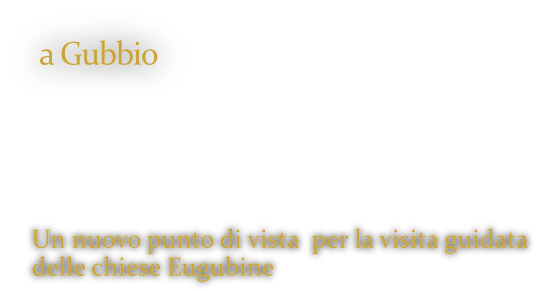The Diocesan Museum Pole
The Diocesan Museum Pole
The Diocesan Museum of Gubbio is part of the, a prestigious cultural network that groups together the following structures under a single management, in addition to the cathedral museum:
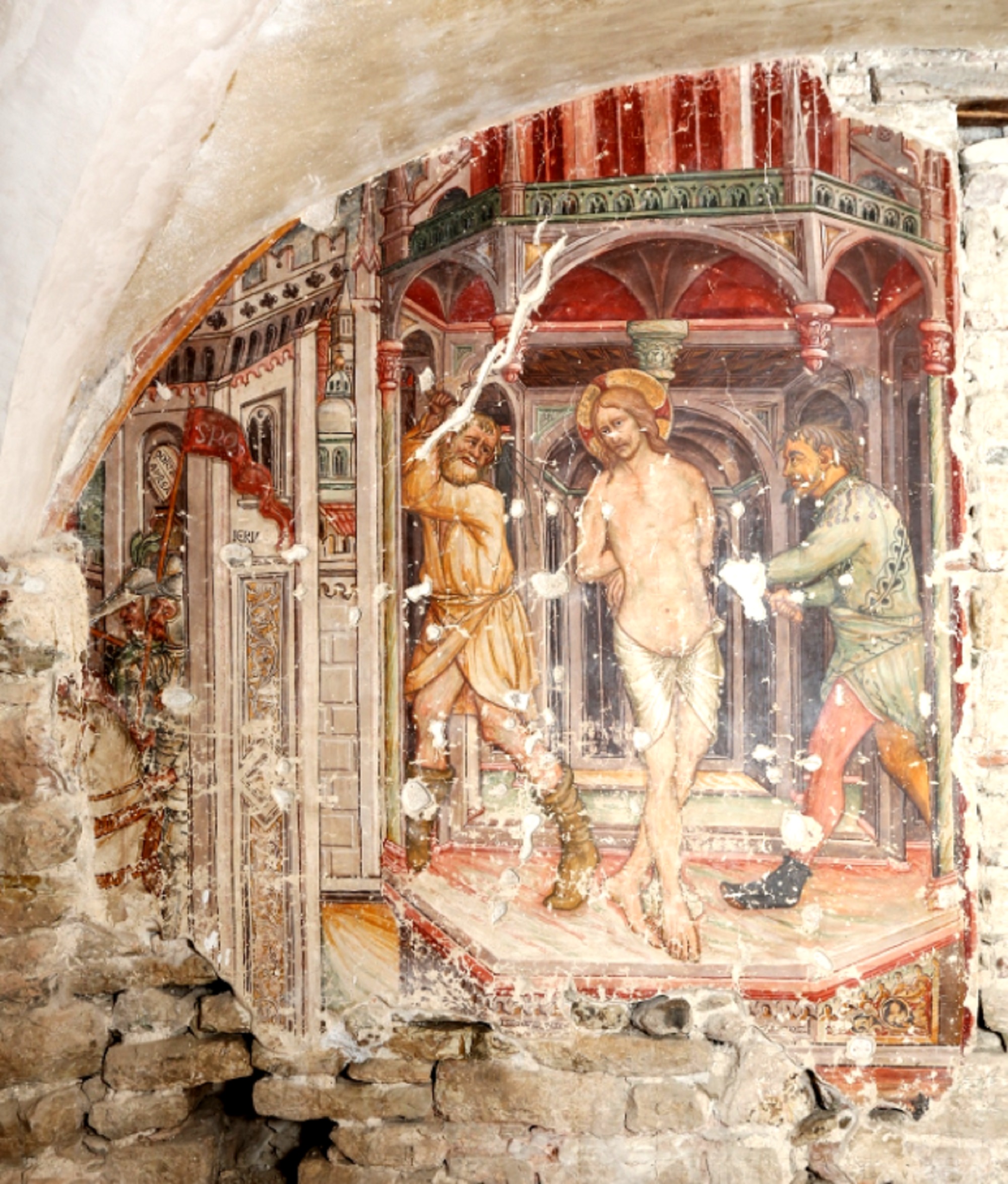
Church of Santa Maria dei Laici
The Church of Santa Maria dei Laici, also known as the Church of the “Whites”, is an integral part of the circuit of the Diocesan Museum Poleof Gubbio. Inside, it houses an important work by Federico Barocci, a painter from Urbino whose elegant style is considered an important exponent of Italian Mannerism and Counter-Reformation art, and one of the precursors of the Baroque. The painting recounts the Gospel episode of the Annunciation; the Virgin is seated with the Book of Psalms resting on her knees. Mary faces the angel, she is surprised and astonished by the announcement, by the turmoil of the many questions that tumult in her heart, and by her acceptance of the announcement. The angel, kneeling before her, with a friendly and reassuring face, indicates with his right hand that he is a messenger of a Superior Will, while with his left hand he holds a lily, a symbol of purity and a guarantee for the greatness of the mystery he has just announced. At Our Lady’s side is the work basket, a clear reference to the daily toil that she, like all women of the time, had to face. It was commissioned on 8 April 1610 by the Confraternity of the Whites, specifically by its Prior, Count Muzio Beni to the Urbino painter. On that occasion, pacts were stipulated, among which the dimensions of the “Altar Painting of the Nunziata” were to be those requested by the Confraternity, the fees were set at 400 ecus (with an advance payment of 200 ecus) and the agreement that should the work remain unfinished due to the artist’s death, a board of experts would have to calculate the value of the part completed.
Barocci actually died in 1612 and the work remained unfinished. His heirs received the sum established by the board of experts, and the completion of the work, the Announcing Angel, was entrusted to his pupil Ventura Mazza of Cantiano, for 45 ecus.
The Annunciation of the Confraternity of the Whites is undoubtedly Barocci’s last work. In June 1619, the painting was taken to Gubbio, it stayed a few days in the church of Madonna del Ponte, a few more in the church of S. Secondo, and on 4 July 1619, with an imposing procession attended by the bishop, the municipal authorities and many citizens, to the sound of the band, it was placed on the High Altar of the Church of the Whites. In order to dare to emphasise this work, the brethren attempted more requests (1633,1648,1650) to have the church raised, but to no avail. The painting has always remained in place. During the French occupation of 1798, on 7 Germinale of the Republican Year VI (27 March 1798), the painting was moved to the church of Santa Maria dei Servi, the official church of the Municipality, to prevent its possible export. When the danger ceased, it was returned to its original location.
The Church is open from Thursday to Sunday from 10.30am to 1pm and 3pm to 6pm for information: 0759220904
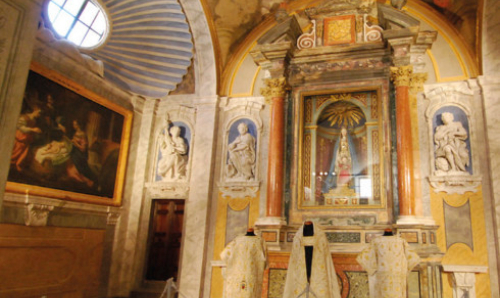
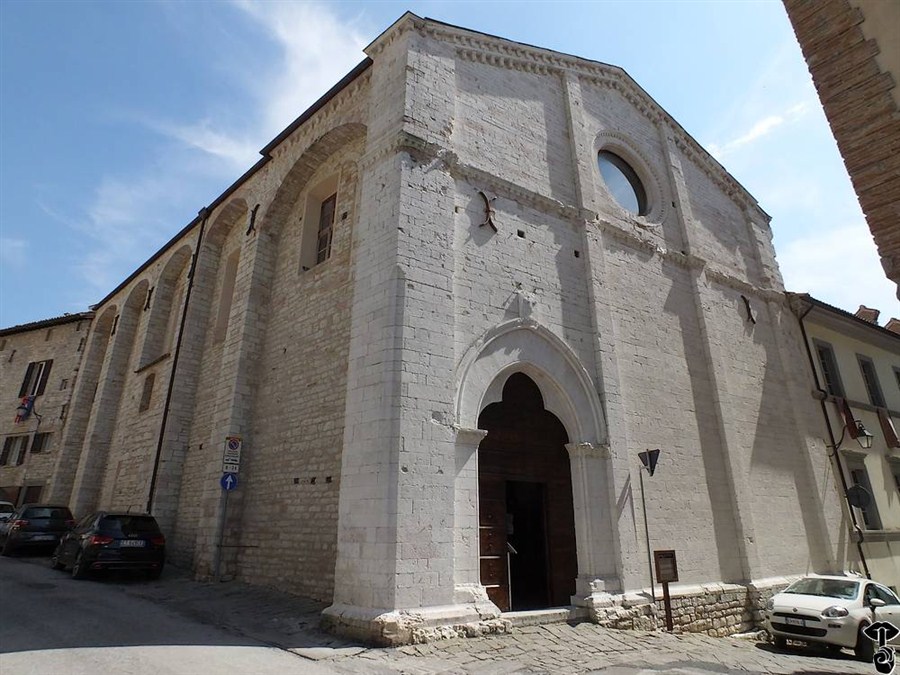
Church of Santa Maria Nuova
The Church of Santa Maria Nuova was built in the second half of the 13th century, probably between 1270 and 1280. In the year 1292 it is mentioned in the papal bull of Pope Nicholas IV by which indulgences were granted to the faithful who visited the church on the feast day of Our Lady. The church has a single nave, originally smaller in size with the façade set back one bay and with large transverse arches. In the 14th century it was enlarged according to the current layout, with the main entrance with a beautiful off-centre ogival doorway and a few essential decorations. In 1440, separated from the Abbey of S. Maria d’Alfiolo, it was united with the Monastery of S. Agostino; in 1692 the Church was still under the Jurisdiction of the Fathers of the Order of the Hermits of S. Agostino “extra meniacivitatis”. Already at this time, all the valuable frescoes preserved in the Church of S. Maria Nuova were “cover byplaster”, with the exception of the “Madonna and Child with Saints” known as the “Belvedere” by Ottaviano Nelli (15th century), a devotional image dear to the city of Gubbio. In 1998, the pictorial cycle, including the fresco of the “Madonna of the Belvedere”, underwent complex consolidation and restoration work, in anticipation of the complete recovery of the building, aimed at reopening and making use of all the works originally contained therein.
The Church of Santa Maria Nuova is open to the public every Saturday and Sunday from 10.30 a.m. to 12.30 p.m. and from 3.30 p.m. to 5.30 p.m. or by appointment.

Church of Santa Maria Nuova
The Church of Santa Maria Nuova was built in the second half of the 13th century, probably between 1270 and 1280. In the year 1292 it is mentioned in the papal bull of Pope Nicholas IV by which indulgences were granted to the faithful who visited the church on the feast day of Our Lady. The church has a single nave, originally smaller in size with the façade set back one bay and with large transverse arches. In the 14th century it was enlarged according to the current layout, with the main entrance with a beautiful off-centre ogival doorway and a few essential decorations. In 1440, separated from the Abbey of S. Maria d’Alfiolo, it was united with the Monastery of S. Agostino; in 1692 the Church was still under the Jurisdiction of the Fathers of the Order of the Hermits of S. Agostino “extra meniacivitatis”. Already at this time, all the valuable frescoes preserved in the Church of S. Maria Nuova were “cover byplaster”, with the exception of the “Madonna and Child with Saints” known as the “Belvedere” by Ottaviano Nelli (15th century), a devotional image dear to the city of Gubbio. In 1998, the pictorial cycle, including the fresco of the “Madonna of the Belvedere”, underwent complex consolidation and restoration work, in anticipation of the complete recovery of the building, aimed at reopening and making use of all the works originally contained therein.
The Church of Santa Maria Nuova is open to the public every Saturday and Sunday from 10.30 a.m. to 12.30 p.m. and from 3.30 p.m. to 5.30 p.m. or by appointment.
Ubaldian Memories Collection
The Collection, located in the Cloister of St. Ubaldo on the Ingino Mountain, is a permanent museum exhibition that, through objects, documents and works of art, illustrates the life of Ubaldo, Patron Saint of Gubbio who lived between 1085 and 1160 and the cult dedicated to him over the centuries, with reference also to the famous Festa dei Ceri, a town celebration that for about eight hundred years has taken place in Gubbio on 15 May, the eve of the saint’s death. The exhibits include paintings, wooden objects and votive objects, as well as textile artefacts found inside the urn where Saint Ubaldo’s relics were placed. In particular, the following stand out for their importance: a “ragged and patched coarse cloth shirt with untidy sleeves” made of linen cloth and a yellow silk and linen drape with red decoration consisting of a series of birds and rampant lions, facing each other in parallel rows and enclosed within a rigid wolf’s tooth geometric structure, both dating back to the 13th century. Ubaldo, as mentioned, was born in Gubbio around 1085. Orphaned of both parents, he was educated by a very religious uncle, who nevertheless hindered his plan, manifested when he was fifteen, to retire to a solitary life; he did, however, allow him to join the canons of San Secondo. Ordained a priest by Bishop John in 1114, Ubaldo undertook the work of reforming the church by retiring, as St Pier Damiani had already done, to the monastery of Fonte Avellana.
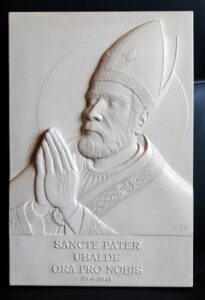
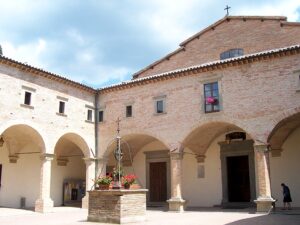
He returned to Gubbio in 1129 to rule the diocese as bishop on the specific order of Pope Honorius II himself. Gubbio was then a rather restless city, divided by fierce discords that pitted faction against faction, lineage against lineage. And blood often ran on the city streets. The Bishop Ubaldo offered to act as peacemaker and one day risked his own life in an attempt to quell one of the many violent riots. He threw himself between the contenders begging them to desist, but was overwhelmed. Only when the people of Gubbio realised they had left him battered on the ground did they put an end to the brawl, concerned for the fate of their bishop and regretting their foolishness. From that day on, tempers calmed down. Ubaldo, loved by the people because he was always ready to defend them from the arrogance of the powerful, ruled the city for over thirty years, saving it from the destruction threatened by Frederick Barbarossa. As Pope Leo had done with Attila, Bishop Ubaldo went to meet the emperor, armed only with the strength of faith and the prestige of his episcopal dignity. Barbarossa, impressed by such courage, changed his mind and spared the city. Ubaldo died on 16 May 1160. Thirty years later, on the wave of the sincere veneration paid by the people of Gubbio to their holy bishop, he was also elected Patron Saint of the city. Ubaldo was included in the roll of Saints.
The Ubaldian Memories Collection is open every day from 10 a.m. to 12.30 p.m. and from 3 p.m. to 6 p.m. It can be visited with the possibility of a cumulative ticket, which also includes a visit to PALAZZO DEL BARGELLO.

